<< Our Photo Pages >> tel 'Arad - Ancient Village or Settlement in Israel
Submitted by motist on Saturday, 14 April 2007 Page Views: 10503
Multi-periodSite Name: tel 'AradCountry: Israel
NOTE: This site is 13.316 km away from the location you searched for.
Type: Ancient Village or Settlement
Nearest Town: 'Arad
Latitude: 31.279862N Longitude: 35.124554E
Condition:
| 5 | Perfect |
| 4 | Almost Perfect |
| 3 | Reasonable but with some damage |
| 2 | Ruined but still recognisable as an ancient site |
| 1 | Pretty much destroyed, possibly visible as crop marks |
| 0 | No data. |
| -1 | Completely destroyed |
| 5 | Superb |
| 4 | Good |
| 3 | Ordinary |
| 2 | Not Good |
| 1 | Awful |
| 0 | No data. |
| 5 | Can be driven to, probably with disabled access |
| 4 | Short walk on a footpath |
| 3 | Requiring a bit more of a walk |
| 2 | A long walk |
| 1 | In the middle of nowhere, a nightmare to find |
| 0 | No data. |
| 5 | co-ordinates taken by GPS or official recorded co-ordinates |
| 4 | co-ordinates scaled from a detailed map |
| 3 | co-ordinates scaled from a bad map |
| 2 | co-ordinates of the nearest village |
| 1 | co-ordinates of the nearest town |
| 0 | no data |
Internal Links:
External Links:
Tel 'Arad, NE' Negev desert, Israel
Tel 'Arad lies in the Eastern Negev desert, north of the 'Arad rift covering an area of 52 hectares.
Ancient Cannanite settlement in Negev desert inhabited from Neolithic to Roman times. The ruins of a Canaanite city from Early Bronze Age inhabited from the end of the 4th millennium BCE to early 3rd millennium BCE, started as a small village, grew into a planned and fortified city, covering an area of about 10 hectares with a palace, shrines, residential buildings and marketplace.
The water supply was provided by collecting surface run-of rain water which flowed down the streets and drained into a large reservoir situated in a natural depression at the centre of the city, a thick - walled enclosure called "Water Citadel".
'Arad had close ties with Southern Sinai where copper and other goods were brought on the ancient Atarim road.
'Arad became the centre of trade of copper and other products.
The Canaanite city existed for about 350 years, until +- 2650 BCE, in this phase the end of the The Early Bronze age,the fortified cities in the Levant had been abandoned by the inhabitants. Excavations revealed an absence of any human settlement from the end of the Early Bronze Age until the Israelite settlement in the beginning of the 11th century BCE.
The Israelite settlement began on the highest part of the site, a small enclosure was built in a form of a courtyard encircled by residential buildings.
In the reign of King Solomon a fortress was erected on the site.
Inside the fortress some 200 clay sherds (Ostraca) bearing ink-inscribed writings dated to various periods of the Judean Kingdom were discovered; over 100 Ostraca are written in Hebrew and about 90 in Aramaic.
In the fortress a shrine was found with a square altar, erected from bricks and unhewn stone.The shrine layout runs east - west axis, includes an inner courtyard, sanctuary and the Holy of Hollies with two incense altars.
You may be viewing yesterday's version of this page. To see the most up to date information please register for a free account.

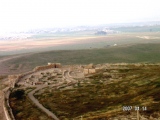







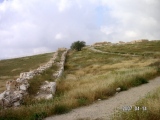

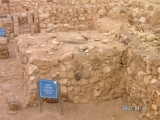

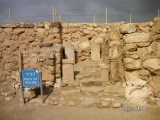
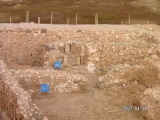
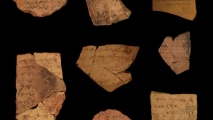



These are just the first 25 photos of tel 'Arad. If you log in with a free user account you will be able to see our entire collection.
Do not use the above information on other web sites or publications without permission of the contributor.
Click here to see more info for this site
Nearby sites
Click here to view sites on an interactive map of the areaKey: Red: member's photo, Blue: 3rd party photo, Yellow: other image, Green: no photo - please go there and take one, Grey: site destroyed
Download sites to:
KML (Google Earth)
GPX (GPS waypoints)
CSV (Garmin/Navman)
CSV (Excel)
To unlock full downloads you need to sign up as a Contributory Member. Otherwise downloads are limited to 50 sites.
Turn off the page maps and other distractions
Nearby sites listing. In the following links * = Image available
10.0km NW 325° Khirbat Anim* Ancient Temple
14.2km N 351° Khirbat Susya* Ancient Village or Settlement
21.4km W 278° Shoket Junction* Ancient Village or Settlement
22.2km E 80° Masada* Hillfort
23.4km ENE 58° Cave of the Treasure in wadi Mishmar* Cave or Rock Shelter
25.5km SE 124° Mesad Zohar* Hillfort
27.3km N 357° Cave of the Patriarchs Rock Cut Tomb
27.3km W 262° Tel Be'er Shev'a* Ancient Village or Settlement
28.6km WNW 302° Khirbat Za'aq* Ancient Village or Settlement
28.9km SSW 191° Mamshit* Ancient Village or Settlement
29.5km WNW 292° Khirbet Abu Hof (chaf)* Ancient Village or Settlement
31.6km W 270° Beer Sheva north* Ancient Village or Settlement
32.1km NE 51° Tel Goren* Ancient Village or Settlement
32.5km NE 51° Ein Gedi ancient Synagogue* Ancient Temple
32.6km NE 50° Ein Gedi Chalcolithic Temple* Ancient Temple
33.5km W 260° Bir Al Safadi* Ancient Village or Settlement
34.3km NW 325° Amatzia* Ancient Mine, Quarry or other Industry
39.0km E 94° Bab edh-Dhra Ancient Village or Settlement
41.1km NW 321° Tel Lachish* Artificial Mound
41.4km S 179° Ma'ale-Akrabbim* Ancient Trackway
41.9km NNW 329° Bet Guvrin-Maresha National Park* Ancient Village or Settlement
42.1km E 94° Zahrat adh-Dhra’ 2 Ancient Village or Settlement
42.1km NNW 340° Tel Burgin* Ancient Village or Settlement
42.4km SW 215° Har Rakhama* Ancient Village or Settlement
43.5km NNW 341° Khirbat Ethri* Ancient Village or Settlement
View more nearby sites and additional images

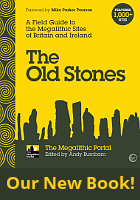



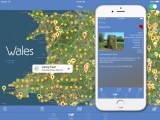
 We would like to know more about this location. Please feel free to add a brief description and any relevant information in your own language.
We would like to know more about this location. Please feel free to add a brief description and any relevant information in your own language. Wir möchten mehr über diese Stätte erfahren. Bitte zögern Sie nicht, eine kurze Beschreibung und relevante Informationen in Deutsch hinzuzufügen.
Wir möchten mehr über diese Stätte erfahren. Bitte zögern Sie nicht, eine kurze Beschreibung und relevante Informationen in Deutsch hinzuzufügen. Nous aimerions en savoir encore un peu sur les lieux. S'il vous plaît n'hesitez pas à ajouter une courte description et tous les renseignements pertinents dans votre propre langue.
Nous aimerions en savoir encore un peu sur les lieux. S'il vous plaît n'hesitez pas à ajouter une courte description et tous les renseignements pertinents dans votre propre langue. Quisieramos informarnos un poco más de las lugares. No dude en añadir una breve descripción y otros datos relevantes en su propio idioma.
Quisieramos informarnos un poco más de las lugares. No dude en añadir una breve descripción y otros datos relevantes en su propio idioma.